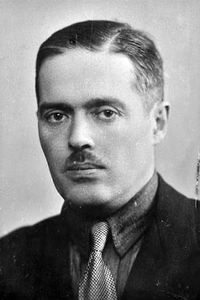Mikhail Mikhaylovich Tsekhanovskiy, a Soviet artist and director of animation of great renown, left an indelible mark on the world of animation, with a career spanning several decades.
Born with an innate passion for the arts, Tsekhanovskiy's early years were filled with the creative spark that would guide him throughout his life. It was at the prestigious First St. Petersburg Gymnasium that he first began to hone his painting skills, a talent that would serve him well in the years to come.
After completing his education, Tsekhanovskiy's artistic inclinations led him to embark on a journey to the City of Light, Paris, where he would work in a private sculpture workshop from 1908 to 1910.
Tsekhanovskiy's academic journey underwent a significant transformation following his sojourn in Paris, as he made the decision to return to St. Petersburg, thereby enrolling in the prestigious Law Faculty of St. Petersburg University, where he pursued his studies from 1911 to 1914.
Despite not ultimately completing his degree at the university, Tsekhanovskiy remained committed to his educational pursuits, opting instead to further his artistic talents at the Imperial Academy of Arts in St. Petersburg.
Several years later, in 1918, Tsekhanovskiy successfully completed his studies at the Moscow School of Painting, Sculpture and Architecture, thus culminating his academic journey with a well-deserved diploma.
Between the years of 1918 and 1923, Tsekhanovskiy dedicated himself to serving in the Red Army, a period of time that played a pivotal role in his artistic development, as he had the opportunity to refine his skills in the realm of applied art and sculpture.
Upon his return to Petrograd, he chose to continue his educational pursuits, delving deeper into the world of applied work, and simultaneously, he embarked on a career as an instructor-artist at the esteemed State Art and Industrial College, a position that allowed him to share his knowledge and expertise with others.
Since the dawn of 1926, Tsekhanovskiy has dedicated his professional career to the esteemed Rainbow Publishing House and the esteemed children's editorial board of Lengiz, where he has had the privilege of illustrating a plethora of children's and youth books alongside the illustrious Vladimir Lebedev.
In addition to his extensive illustration work, Tsekhanovskiy has also been instrumental in creating what is known as "movie books" - a series of innovative publications that feature short animations incorporating cinematic techniques, including "The Ball", "Bim-Bom", and "Train".
Tsekhanovskiy's illustrious career as a director-animator spanned two distinct periods, namely from 1928 to 1936 and subsequently from 1938 to 1942, during which he was employed at the renowned Leningrad film factory Sovkino, which would later undergo a name change to Lenfilm.
It was during this time that Tsekhanovskiy embarked on his first foray into film work, specifically with the cartoon Pochta, which was meticulously crafted in 1929. This inaugural project was heavily influenced by his own illustrations, which had previously been featured in the book penned by the celebrated author Samuil Marshak.
Incorporating the innovative constructivist method, as showcased in the book, Tsekhanovskiy's Pochta cartoon effectively showcased his burgeoning talent as a director-animator, laying the groundwork for his future accomplishments in the field.
Tsekhanovskiy, a pioneering figure in the realm of sound and music, embarked on an innovative journey in 1929, joining forces with Evgeny Shoplo and Arseniy Avraamov to revolutionize the art of music synthesis. Through the groundbreaking "drawn sound" technique, they managed to create musical masterpieces by meticulously illustrating sound tracks on film, paving the way for a new era in audiovisual storytelling.
The fruits of their labor soon took shape, as the voiced version of Pochta (1929) made its debut in 1930, marking a significant milestone in the history of Soviet animation. This trailblazing cartoon not only became the first Soviet sound cartoon, but it also went on to captivate a wide audience, breaking down geographical barriers and becoming the first Soviet cartoon to be widely showcased abroad.
Furthermore, the hand-painted version of Pochta (1929) achieved yet another groundbreaking feat, earning the distinction of being the first Soviet color film, a testament to the trio's ingenuity and artistic vision.
Mikhail Tsekhanovskiy, a renowned filmmaker, has been at the helm of the esteemed Soyuzmultfilm studio since 1942, a tenure marked by unparalleled success and numerous accolades. His animated creations have consistently garnered top honors at prestigious international film festivals, solidifying his reputation as a master of his craft.












